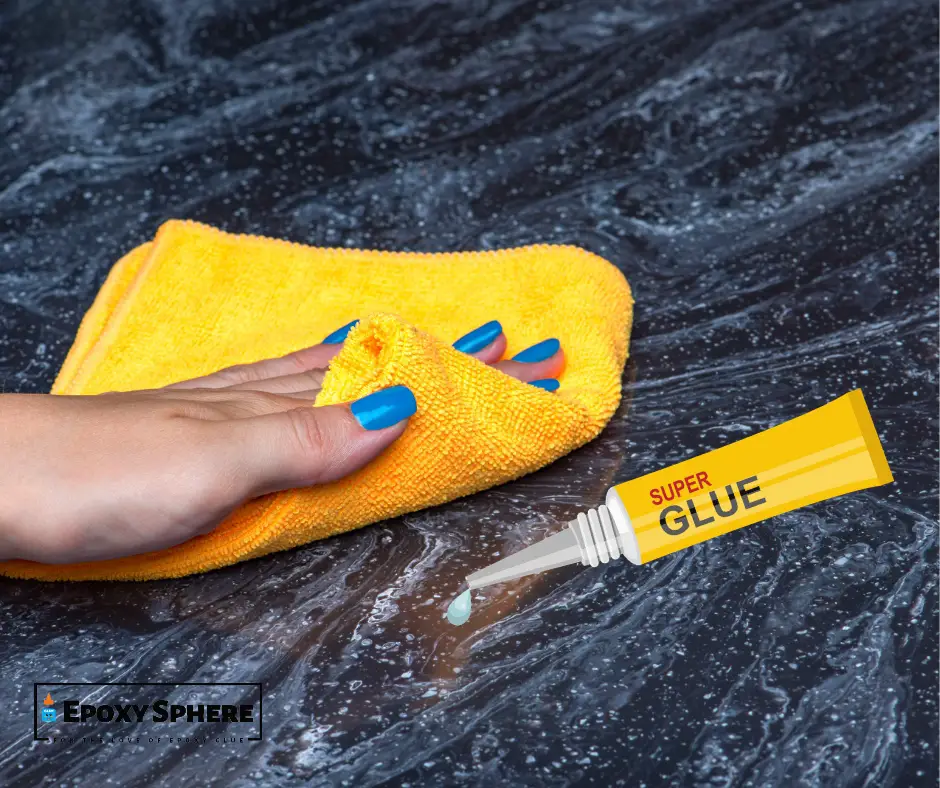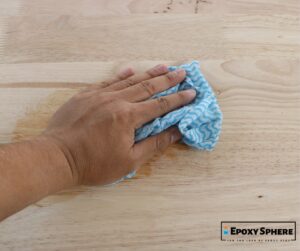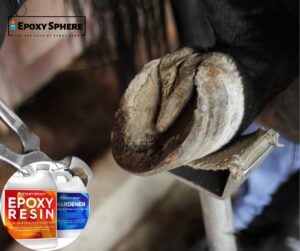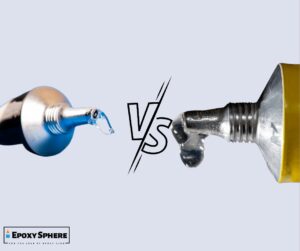
Epoxy glue is a popular adhesive because it’s strong, durable, and easy to clean up. However, there are times when epoxy gets used for the wrong purposes; be it gluing metal onto wood surfaces or using epoxy to stick marble to an existing countertop.
Marbles are usually fixed permanently when glued. After testing many ways of removing epoxy from marble, I can proudly say I’ve found the best way of doing it.
Removing epoxy glue from marble can be a bit tricky since epoxy adheres very tightly to most surfaces.
Many factories during the processing will add some epoxy glue and colourants into the mixture of marble that will affect our daily use later.
The epoxy glue has a strong adhesive property which can make it difficult to remove if we only use an ordinary solvent to get it off.

3 Easy Steps For Removing Epoxy From Glue
Removing epoxy glue from marble is a delicate and time-consuming process. You will need to use a lot of elbow grease, but it can be done.
Things needed:
- Water
- Putty knife
- Acetone or Mineral spirits
- Small bowl or Jar
- Cotton ball
- Small wiping cloth
Follow the steps below:
1. Soak the area with water
The first thing that you need to do when removing epoxy glue from marble is to soak the area with water. This will loosen up the epoxy and make it easier to scrape off.
2. Scrape off as much as possible
Scrape off as much of the epoxy glue as possible with a putty knife or something similar. Take caution not to scratch or gouge your marble while doing this. If you find that there are still some small pieces left behind, move on to step 3.
3. Use acetone and mineral spirits to remove the remaining residue
Once you have scraped off all the epoxy glue that can be removed by hand, mix equal parts acetone and mineral spirits in a small bowl or jar.
Dip a cotton ball into this mixture and apply it directly onto your marble, where there are still remnants of epoxy left behind. Let it sit for several minutes until all residue is gone, then wipe it clean with water.
How To Clean Epoxy Off Marble
Epoxy is a great glue that can be used to bond different surfaces together, but it isn’t always easy to remove. Some processes are effective, but they can also damage the marble in the process. Here are a few other methods you can try out:
1. Mild soap and water
Use warm water with a small amount of cleanser or soap. Use a soft cloth to apply the solution to the epoxy and scrub gently with an old toothbrush or scrub brush. Allow the solution to sit on the surface for several minutes before wiping it off with a dry towel. Repeat if necessary until all of the epoxies are removed from the surface.
2. Acetone-Based Cleaner
Acetone is a solvent that works well on most materials and can be used to remove epoxy from marble. You’ll need a small amount of acetone-based cleaner and a paintbrush or rag to apply it to the surface of the marble. Apply the solvent with the brush or rag and allow it to sit for several minutes before wiping away any remaining residue with an alcohol-soaked rag or paper towel.
3. Mineral Spirits
Mineral spirit is a solvent that dissolves epoxy, allowing it to be wiped away with a dry cloth or paper towel. If you’re dealing with very stubborn epoxy stains, mineral spirits may need several applications before the stain is removed entirely. Mineral spirits also work well on varnish, shellac, and lacquer-based stains left behind by many epoxy products.
4. Rubbing Alcohol
Rubbing alcohol removes waxes and greases from floors and other hard surfaces, including marble countertops and bathroom vanities. It also works well as a degreaser for removing oil-based paints on walls and other surfaces in your home or office space.
Does Acetone Harm Marble?
No, acetone is not harmful to marble nor does it stain it. But it does dissolve lacquer, varnish, shellac, and other resins.
Most experts agree that acetone doesn’t harm marble, but there are exceptions. If you use too much acetone on marble, it can cause superficial etching that wears away the stone surface and leaves a dull appearance.
The main issue with using acetone on marble is that it will remove any sealant used on the surface of the stone, so you should never use it without testing first in an inconspicuous area to make sure it won’t damage the finish on your marble or limestone flooring or countertops.
Does Magic Eraser Work On Marble?
The abrasive nature of Magic Erasers can cause damage to sealants on delicate countertops such as marble and granite.
Not only can you damage the sealant, but the eraser may make the countertop appear dull. All of these cleaning products can cause more harm than good.
Magic Eraser is a sponge-like material that contains melamine foam and works by removing dirt and stains from surfaces like marble without leaving behind any residue.
Magic Eraser works great on stainless steel appliances and granite countertops, but you need to be careful about using it on other materials in your kitchen or bathroom.
Can You Use Rubbing Alcohol On Marble?
Yes, you can use rubbing alcohol on marbles. Rubbing alcohol is a solvent that can be used to clean many surfaces in the home. It is also used as a disinfectant and antiseptic, so it is safe to use on marble.
The cleaning properties of rubbing alcohol make it an effective way to clean almost any surface in your home. You can use it to clean countertops, sinks, and even your flooring.
You may think that rubbing alcohol would harm marble surfaces because it contains alcohol, but this isn’t true at all.
In fact, many people use this product in their bathrooms to clean their bathtubs and countertops because it cleans so well without leaving behind any streaks or residue like other cleaning products do.
What Should You Not Use On Marble?
You should not use acidic cleaners like vinegar, Windex, and bleach. These products will leave a dull spot or etch the surface of your marble countertop. They also contain chemicals that are unsafe for humans to touch.
Also, do not use Waxes or polishes that contain silicone. These types of products will build up over time and make it difficult for dirt to come off later on.
You’ll need to re-clean your marble much more often than if you had used a non-silicone product instead.
In Conclusion
The most important thing to remember is not to get frustrated or give up too soon. The key to removing epoxy from marble is time. You might not remove it all in one or two tries, but with patience and perseverance, you can do it.

Hi, This is John Davis. After years of working in the construction industry, I decided to create a website that would provide people with information about glue and its exceptional uses. I hope You find it useful






